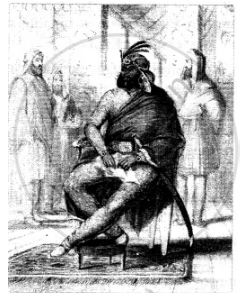Advertisements
Advertisements
प्रश्न
Match the Columns:
| A | B |
| 1. Shahu | (a) Sikh kingdom |
| 2. Murshid Quli Khan | (b) Awadh |
| 3. Shuja-ud-Daulah | (c) Mysore |
| 4. Tipu Sultan | (d) Bengal |
| 5. Ranjit Singh | (e) Maratha King |
उत्तर
| A | B |
| 1. Shahu | (e) Maratha King |
| 2. Murshid Quli Khan | (d) Bengal |
| 3. Shuja-ud-Daulah | (b) Awadh |
| 4. Tipu Sultan | (c) Mysore |
| 5. Ranjit Singh | (a) Sikh kingdom |
संबंधित प्रश्न
Choose the correct answer:
Shuja-ud-DauIah was the nawab of ____________.
State whether the following is true or false:
Bengal was one of the poorest provinces of the Mughal empire.
State whether the following is true or false:
Lucknow was the cultural centre of Bengal.
State whether the following is true or false:
The most powerful kingdom in the south was Mysore.
Answer the following question in one or two words/sentences:
What made the Rajputs vulnerable to the selfish designs of the English East India Company?
This is a picture of the founder of the kingdom that extended the Khyber Pass in the north to Sindh in the south.
What effect did this treaty have on his policy of expansion?
Fill in the blank
____________ was the leader of the Sikhs after the death of Guru Govind Singh.
State whether the following statement is True or False
Safdar Jung was the first Nizam of Hyderabad.
Answer the following question
When was the Battle of Plassey fought? What effect did it have on the position of the English East India Company?
Match the contents of Column A and Column B
| Column A | Column B |
| 1. Nizam-ul-Mulk | (a) Tiger of Mysore. |
| 2. Shivaji | (b) founded the state of Hyderabad. |
| 3. Tipu Sultan | (c) founder of the Maratha power. |
| 4. Gaekwad | (d) united the Sikhs on the west of river Sutlej. |
| 5. Holkar | (e) Nagpur |
| 6. Scindia | (f) Baroda |
| 7. Bhonsle | (g) Indore |
| 8. Peshwa | (h) Gwalior |
| 9. Ranjit Singh | (i) Poona |
